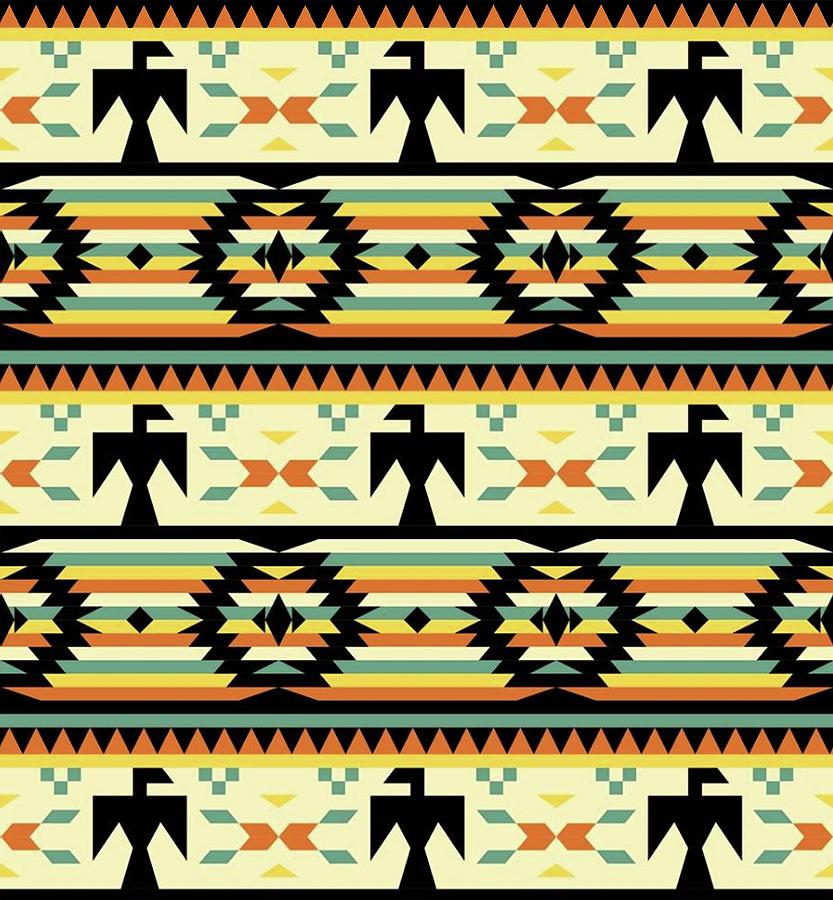Table Of Content

These patterns can range from simple geometric shapes to more complex designs that tell a story or convey a specific meaning. The use of different colors and sizes of beads adds depth and texture to the patterns, creating a visually stunning effect. Native American beadwork is a rich and intricate art form that has been practiced for centuries. The craftsmanship behind these beautiful creations is a testament to the skill and dedication of Native American artisans.
Ancient Origins of Native American Pottery
The pottery often featured intricate patterns, animal figures, or geometric shapes, each possessing its symbolism. For instance, a pottery piece with a bear motif might symbolize strength and power, while one with a sun design could represent life and renewal. The history and cultural significance of Native American pottery are profound.
Regional Styles and Patterns
I use the traditional styles of Dakota beadwork, quillwork and ledger art to be a seed from which my vision grows. After the thread contains all the necessary beads for the first part of the design, the artist lays it across the fabric. Then, they use another needle to stitch the first thread down to the fabric between each bead. Instead of using a loom or fabric backing for this type of Native American beadwork, gourd or peyote stitching is worked as a tube or directly around an object like the handle of a basket.
KEARA Native American Amigurumi Crochet Pattern
The Native American bead pattern is a traditional art form that has been practiced for centuries by indigenous tribes across North America. This intricate craft involves the meticulous arrangement of small beads to create beautiful designs and patterns on various objects such as clothing, accessories, and ceremonial regalia. The artistry of Native American beadwork goes beyond the mere creation of visually stunning pieces.
From New York, to Paris, to D.C.: Native American fashion gains ground, in spite of stolen designs - Salon
From New York, to Paris, to D.C.: Native American fashion gains ground, in spite of stolen designs.
Posted: Sat, 18 Feb 2017 08:00:00 GMT [source]
Growing up, Emmy saw so many Indigenous-inspired patterns created by non-Indigenous people. In some cases, strips or large patterns were created on bead looms and then sewn in place on a backing material. This applique technique would make decorative work much easier as the artist only had to work with a smaller item rather than an entire dress, tipi, or headdress. A very similar Native American technique to the gourd stitching described above, the brick stitching does not require factors of three in the pattern making.
Navajo Indian Crochet Afghan Pattern, Two Sizes
Op-Ed: Stop Buying "Native Inspired" Designs - Outside
Op-Ed: Stop Buying "Native Inspired" Designs.
Posted: Wed, 25 Jul 2018 07:00:00 GMT [source]
The Navajo people borrowed this style of geometric patterns from the Pueblo people who lived in the southwest. The Pueblo, in turn, borrowed the patterns from two sources – their ancestral Anasazi people and the Spanish who conquered the territories of the Pueblo. Pottery was also a valuable commodity for trade and commerce between different tribes. It was an essential part of the Native American economy, as pottery was often exchanged for other goods such as food, furs, textiles, and tools. The skill of pottery-making allowed tribes to develop relationships and connections with distant communities. Handbuilding allows for a great deal of creativity and artistic expression, as the potter has direct control over the shape and texture of the clay.
Indian Southwestern Motif Crochet Afghan Patterns
These decorative pots were adorned with intricate designs, symbols, and motifs that represented various aspects of Native American life, such as fertility, nature, and spirituality. The designs were often painted using natural pigments derived from plants and minerals found in the local environment. Native American pottery holds fascinating symbolism that goes beyond its aesthetic appeal. The geometric designs, animal imagery, spirituality, creation stories, and cultural exchange all contribute to the rich symbolism of this ancient art form. By unraveling the meaning behind these symbols, we gain a deeper understanding of the indigenous tribes and their profound connection to their cultural heritage.
American Indian Patterns - Missouri River Brand Craft Patterns
I wanted other artists to feel a connection with the materials they use while creating, and to invoke emotion in those who wear the pieces. I am an indigenous language student at Yellow Head Tribal College and am also a designer/beadwork artist. He has been making traditional baskets for 15 years and also creates detailed beadwork and moccasin sewing as well as fabric designing. The Plains Indians were most popularly known for their brilliant beadwork patterns. These included a number of tribes including Kickapoo, Cree, Arapaho, Cheyenne, Sioux and Crow. Many Native American tribes used beadwork to adorn a variety of accessories.
Aztec Patterns Tribal Designs Tribal Backgrounds Digital Paper High Quality Jpeg Files Navajo American Native Patterns
I’m here to share my Navajo heritage through Native focused knitting designs that help you explore your creativity while honoring Native American artists. The lightning bolt pattern is another popular pattern that is created using the twill weave technique. It features diagonal lines alternating in color, creating a lightning bolt effect.
Instead of creating it around a cylindrical object, it is frequently created to lie flat. To create a flat mat of beads in a particular design, they are arranged horizontally with the bead holes on either side instead of directly next to each other. This requires a sometimes tricky method of holding them in place while you make the stitches. Although patterns were used to adorn rugs, blankets and other items, Native American artists also used them as symbols. Native American pottery is made using various techniques, including coiling, pinching, and molding. Coiling involves creating long, snake-like pieces of clay that are stacked and joined together to form the pottery vessel.
Shana is a registered member of the Department of the Interior Source Directory for Native American Artists. As a community service, 10buffalos.com continues to provide free masks for adults and children throughout the COVID-19 pandemic. A medium-sized handmade book sleeve created by Emmy available on Emmy’s Etsy shop, The Sičángu Sewist.
Original artwork by George Curtis Levi entitled “Old Friends.” The drawing is based on traditional Cheyenne Ledger Art. Brien is an enrolled member of the Turtle Mountain Band of Chippewa in North Dakota. A self-taught artist, Brien calls himself a “digital cell phone artist.” His chosen medium is digital art, using his cell phone as his canvas to create all his work.
Traditional Navajo weaving, for example, is believed to have originated from the Spider Woman who taught the Navajo people how to weave. It is said that she wove a magical web across a canyon, which became a loom, and she taught the first people how to weave on it. Today, weaving is still considered a spiritual practice that connects Native Americans with their heritage and cultural identity.


No comments:
Post a Comment